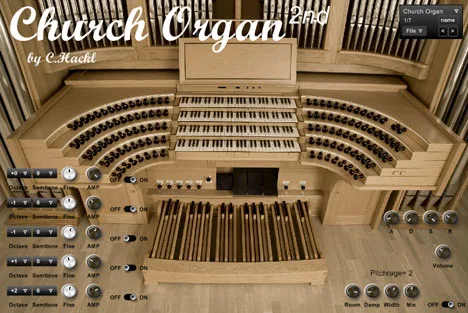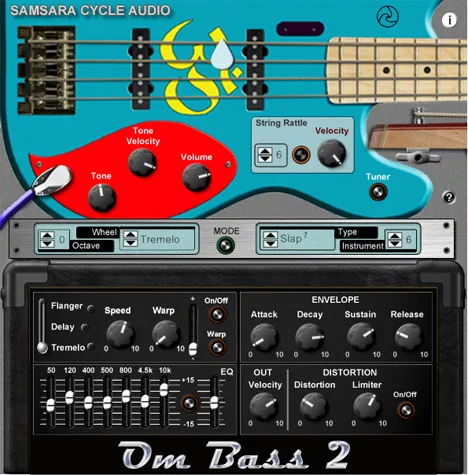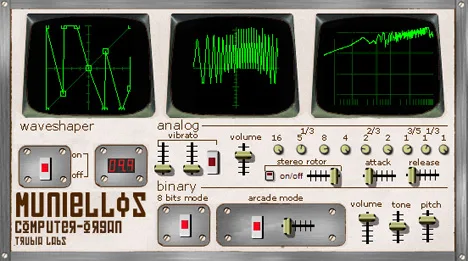Church Organ 2nd: Experience the Grandeur of Organ Sound in Your DAW
The organ is an instrument associated with grandeur, depth, and an unmatched atmosphere. Its powerful, multi-layered sound is capable of filling both cathedral vaults and the most delicate musical textures. If you’ve always dreamed of adding authentic organ sound to your compositions but don’t have access to a real instrument, the VST plugin Church Organ 2nd offers a convenient and accessible solution directly in your Digital Audio Workstation (DAW).
Developed by C Hackl, Church Organ 2nd is a virtual imitation of a traditional organ, allowing you to reproduce the characteristic timbres of this unique instrument. The plugin is designed for Windows operating system users (32-bit), offering easy integration and intuitive controls. It’s an ideal choice for both beginner musicians and more experienced producers who are looking for a specific organ color for their tracks.
Key Features and Capabilities
Church Organ 2nd, despite its simplicity, contains a basic set of functions needed to create an expressive organ sound:
Sound Architecture
- 5 organ oscillators: The basis of the plugin’s sound generation. The presence of five oscillators allows you to mix different timbres and pitches, imitating the registers of a real organ. This makes it possible to form both dense and rich, as well as more transparent and resonant sounds. By experimenting with combinations and levels of these oscillators, you can achieve a wide range of organ sounds, from soft accompaniment to powerful chords.
Dynamic Control
- Built-in ADSR envelope: The abbreviation ADSR stands for Attack, Decay, Sustain, and Release. These are standard parameters of any synthesized or sampled sound that determine how the sound begins, lasts, and ends. The presence of ADSR in Church Organ 2nd gives you control over the dynamics and character of each played note. You can make the sound sharper or smoother at the beginning, control its duration while holding down the key, and set how quickly it fades after releasing. This is critical to give the sound the desired expressiveness and realism.
Expressive Performance
- Pitchbend function: This function allows you to smoothly change the pitch of a note up or down. Although pitchbend is not a standard feature on a traditional organ (the pitch is fixed), in the world of virtual instruments, this feature adds expressiveness and flexibility. You can use pitchbend to create vibrato effects, smooth transitions between notes, or to give the sound a synthesizer character, expanding the plugin’s musical possibilities beyond purely classical organ sound.
Applications in Music
Church Organ 2nd can find its place in a wide variety of musical genres and projects. An obvious application is creating music in the style of Baroque, classical, or church music, where the organ is the central instrument. However, its possibilities are not limited to this. You can use organ timbres to create atmospheric backings in ambient music, add drama to cinematic soundtracks, use it as a lead instrument in progressive music, or even experiment with non-traditional use in modern electronic genres to give a unique character. The flexibility of ADSR settings and the presence of pitchbend allow you to adapt the sound for many contexts.
Conclusion
Church Organ 2nd by C Hackl is a compact and functional VST instrument for Windows users that provides access to classic organ sound. Thanks to its simplicity and the presence of basic controls, it’s a great starting point for those who are just beginning to get acquainted with virtual organ plugins, or for experienced musicians who need a quick and reliable tool to add organ color to their compositions. Create magnificent passages, atmospheric landscapes, or experimental sound textures – Church Organ 2nd is ready to become part of your musical arsenal.



